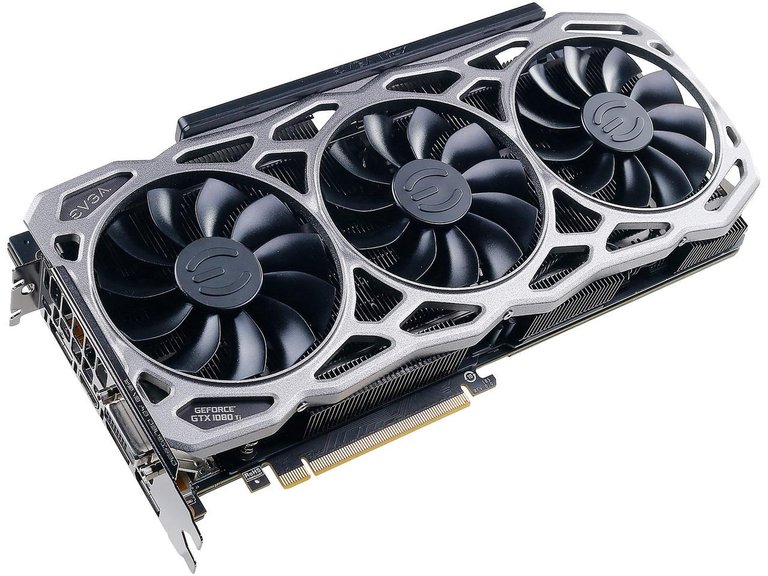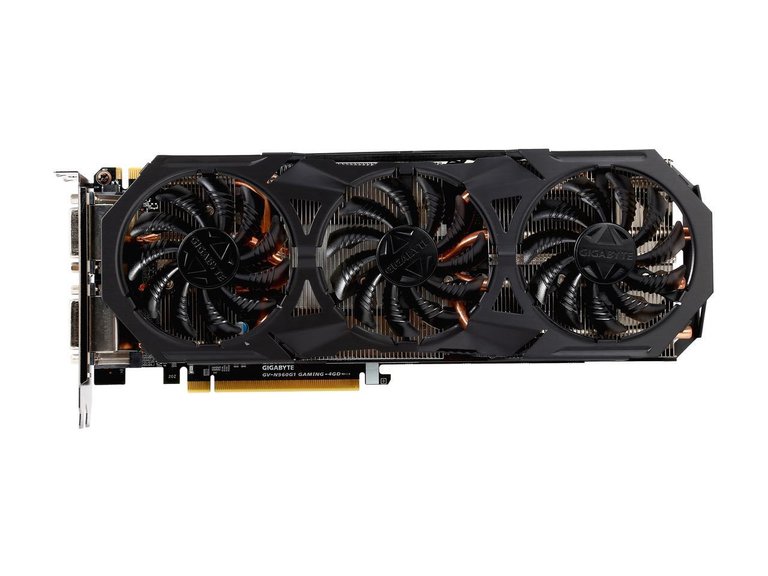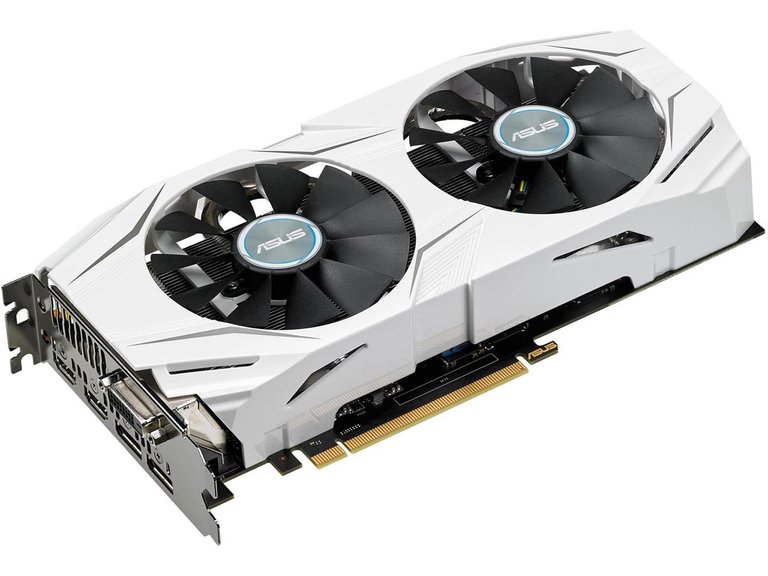Part 4 - Video Cards
See part 3 by clicking the link below:
https://steemit.com/technology/@technerd/building-the-ultimate-gaming-tower-part-3
Basically there are two types of video cards - Nvidia and AMD. Manufacturers will put their own coolers and some will overclock the card to basically re-brand it to look like they created it. Generally Nvidia based cards perform better and run cooler, while AMD cards run hotter and cost a little less. When it comes to high end cards, your biggest deciding factor is the size monitor you'll be using. If your using a 22 inch monitor at 1600x900 resolution, a mid-range card might do just fine. If you are using a 50 flat screen TV, you will need more horsepower. Both Nvdia and AMD cards have options to run two cards in parallel. AMD calls their solution crossfire and Nvidia calls theirs SLI. Note: Your motherboard must support running two video cards to take advantage of these options. there are some numbers to look at when buying a video card as this will most likely be the most expensive part of any build. The first is memory type and how much memory the card brings to the table. Some video cards are still using DDR3 video memory while the de facto standard is DDR5 and this is what I would recommend. Secondly, you have to consider how much memory you will need. Enthusiast cards come with as much as 16 GB DDR5! This is probably a bit of overkill but if money is no object, then future proofing is the way to go. There are numbers like core clock and memory clock that will give you some idea of the speed of the card as well. lastly, You need to consider the number of slots the card will occupy and its length. No point in buying a beautiful jaw dropping video card if it doesn't fit inside your case. Cooling is also a consideration as this is another area of significant heat. The bit rate of the card is also something to look at. I know this sounds a little overwhelming, but just think of it this way: higher numbers are better in every specification. You just have to decide what your budget can handle. If you're going to use two Nvidia cards in SLI, you may not have to buy the most expensive one they sell and two slightly lower priced cards may out-perform one very expensive card.
In a single video card configuration, a nice card to consider would be something along the lines of the EVGA GeForce GTX 1080 Ti FTW3 GAMING, 11G-P4-6696-KR, 11GB GDDR5X, iCX Technology - 9 Thermal Sensors & RGB LED G/P/M

Figure 1
Here are some specs:
Memory: 11Gb DDR5x
Memory Clock: 11016 MHz
Core clock: 1549 MHz with a boost of 1683 MHz.
Bitrate: 352-Bit
Maximum resolution of 7680 x 4320.
I prefer this fan design versus the tunnel design with a single fan on the rear of the card. These designs are much easier to clean. if you have the change, this card will also run in SLI with a second identical card, giving you great frame rates on pretty much any monitor and would make a great bitcoin miner.
If you are going to be running a two card SLI configuration, you could save a few dollars by going to a slightly less expensive card as you will get a boost by have two cards running simultaneously. A nice alternative would be the GIGABYTE GeForce GTX 960 4GB G1 GAMING OC EDITION:

Figure 2
This card retails for around $540, bringing the total for two cards to $1080
Specifications here are:
Memory: 4 GB DDR5 (but you'll be running two cards here)
Core clock: 1241 MHz, OC Mode: 1266 MHz
Memory Clock: 7010 MHz
Memory Interface 128-Bit
Max Resolution: Digital: 4096x2160
The difficulty with running two cards in SLI is what the performance gain will be vs a single card. It's not as simple as multiplying the specs x2. Your mileage will vary depending on manufacturer of the card, the motherboard being used, the processor, etc.
On the AMD side of things, here are a few suggestions:
For a single card, the ASUS ROG Radeon RX 480 STRIX-RX480-8G-GAMING 8GB 256-Bit GDDR5 PCI Express 3.0 HDCP Ready Video Card

Figure 3
This particular card is selling at $714, significantly cheaper but not quite as fast. Compare the specs to Figure 1.
Specifications here are:
Memory: 8 GB DDR5
Core clock: 1266 MHz
Memory Clock: 8000 MHz
Memory Interface 256-Bit
Max Resolution: Digital: 7680 x 4320
Again we see an open fan design making cleaning much easier.
In a crossfire configuration. you could go down a notch to the ASUS Radeon RX 480 DirectX 12 DUAL-RX480-O4G 4GB 256-Bit GDDR5 PCI Express 3.0 HDCP Ready CrossFireX Support Video Card

Figure 4
these cards retail for $640 each bringing your total cost to $1280
Specs:
Memory: 4 GB DDR5
Core clock: Core Clock 1320 MHz (OC Mode)
Memory Clock: 7000 MHz
Memory Interface 256-Bit
Max Resolution: Digital: 5120 x 2880
The difficulty with running two cards in crossfire configuration is what the performance gain will be vs a single card. It's not as simple as multiplying the specs x2. Your mileage will vary depending on manufacturer of the card, the motherboard being used, the processor, etc.
It should be noted I picked these video cards at random and I am not endorsing a single manufacturer. The only factor I took into consideration was the cooling solution where I prefer the open fan design. All of these cards will require a dedicated plug from your power supply and in the case of SLI or Crossfire, you'll need two.
More on power supplies later.
Didn't AMD buy ATI? Pretty sure they just call it AMD now.
I wouldn't do SLI/crossfire unless you are doing some crazy multi monitor hi res stuff, or maybe rendering where you need the power. Otherwise it seems people just do it to show how big there E-peen is.
I just go with the most basic MB, the less bells and whistles seems to mean less issues. Use the money you will save to buy better parts, or just save your money.
As for AMD/ATI, after 30 years it's hard to change an old habit. As for SLI/crossfire - I offered that only as an option and there are pros and cons. I did mention in the article that SLI/Crossfire would only be necessary if you plan on using a 50" flat screen. Basically similar to what you said. Bottom line, there's no right or wrong - it's how much you want and are willing to spend.
Sorry, I was trying to type something out real quick, did not mean to come off like a smartass.
No offense taken. I'm glad you pointed out the AMD/ATI thing. As for SLI/Crossfire, I may not have been as clear as you as I didn't want to insult the people who think it's the best thing since sliced turkey.